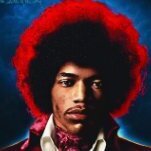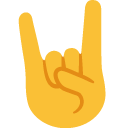Everything posted by Anastasis
-
Epstein and Maxwell
This is all obvious stuff. Al is just out here wilding.
-
Epstein and Maxwell
I am happy to see some videos to the contrary. Everything I recall when Epstein was brought up he got real cagey real quick.
-
Ghislaine "Sgt. Schultz" Maxwell: "I know NOTH-ING"
Just follow the money where it leads. This is not hard, pretty basic.
-
Epstein and Maxwell
I don't remember Trump making any specific promising wrt Epstein files, etc. Of course many satellites and surrogates made hay off that shit, including the AG, FBI Director, etc. But I don't recall a lot of it coming out of Trumps mouth. All the clips I remember are him acting pretty evasive and walking around glass shards. His NPD is manifesting extraordinarily.
-
Ghislaine "Sgt. Schultz" Maxwell: "I know NOTH-ING"
wildcat hallucinating again. I don't think anyone should move along. I think Wyden (D-OR) is doing the real lifting and should be applauded.
-
Epstein and Maxwell
I am just using the quote function as a jump off point. You'll be ok.
-
Ghislaine "Sgt. Schultz" Maxwell: "I know NOTH-ING"
Birthday cards are a political side show. Follow the fn money. Wyden is on the beat. And watch how fast something actually substantive dies.
-
Epstein and Maxwell
It's pretty obvious stuff. Always follow the money. Wonder why no one has thought of that before in this case.
-
Epstein and Maxwell
Wyden seems to be following the right storyline.
-
Epstein and Maxwell
You will never guess what happened before his trial was able to take place.
-
Epstein and Maxwell
Saw bringing logic to a lawyer fight. Good luck.
-
Epstein and Maxwell
I have a feeling that there were not many people in his family lining up to mourn the loss. Just a hunch.
-
All Encompassing Whatcha Smoking With
Happy with teh turkey, this was a little sampler piece. The breast got split and vacuum sealed for sandwich meat down teh road.
-
Epstein and Maxwell
I guess you missed the vibe. I hope he found his way to the bottom of a 50 gallon drum.
-
Epstein and Maxwell
That's a real shame.
-
Epstein and Maxwell
He was a total creep and only got run on this board for as long as he did because of his presence and alignment in the CR.
-
All Encompassing Whatcha Smoking With
Birds were on sale. Did a couple turkey breasts and a pork butt. Should be good on smoked poultry for a while I think.
-
Texas BBQ
Those ribs look great.
-
Is Tulsi Gabbard A Russian Asset?
I wish you would share the story arc bonz.
-
Is Tulsi Gabbard A Russian Asset?
The CR throwing out "neo-mccarthyism" as it relates to just about anything is pretty fucking funny. You guys are a bottomless well.
-
Is Tulsi Gabbard A Russian Asset?
Do you know how pathetic an appeal to the CR collective is in this situation?
-
Is Tulsi Gabbard A Russian Asset?
Essential journalism for historic times
-
Is Tulsi Gabbard A Russian Asset?
Same damn 'lo sweater.
-
Is Tulsi Gabbard A Russian Asset?
- Is Tulsi Gabbard A Russian Asset?
Clown. Tour just being asked to post full text. It’s not that hard. Elsewise keep my name out your mouth. You don’t have a sub do you. Clown. Ran here to post a twat. - Is Tulsi Gabbard A Russian Asset?
Football ...
Basketball ...
Baseball ...
Other Sports ...
Futbol ...
🤫995🤫 ...
Gambling ...
Movies & TV ...
Music ...
Hobbies ...
Lulz ...
Food & Travel
...
Daily Texan ...
Business & Markets ...
Cloak Room ...
Help ...
For Sale ...
Board Discussion ...
Advertise...
Tailgate Donations
Back to top



